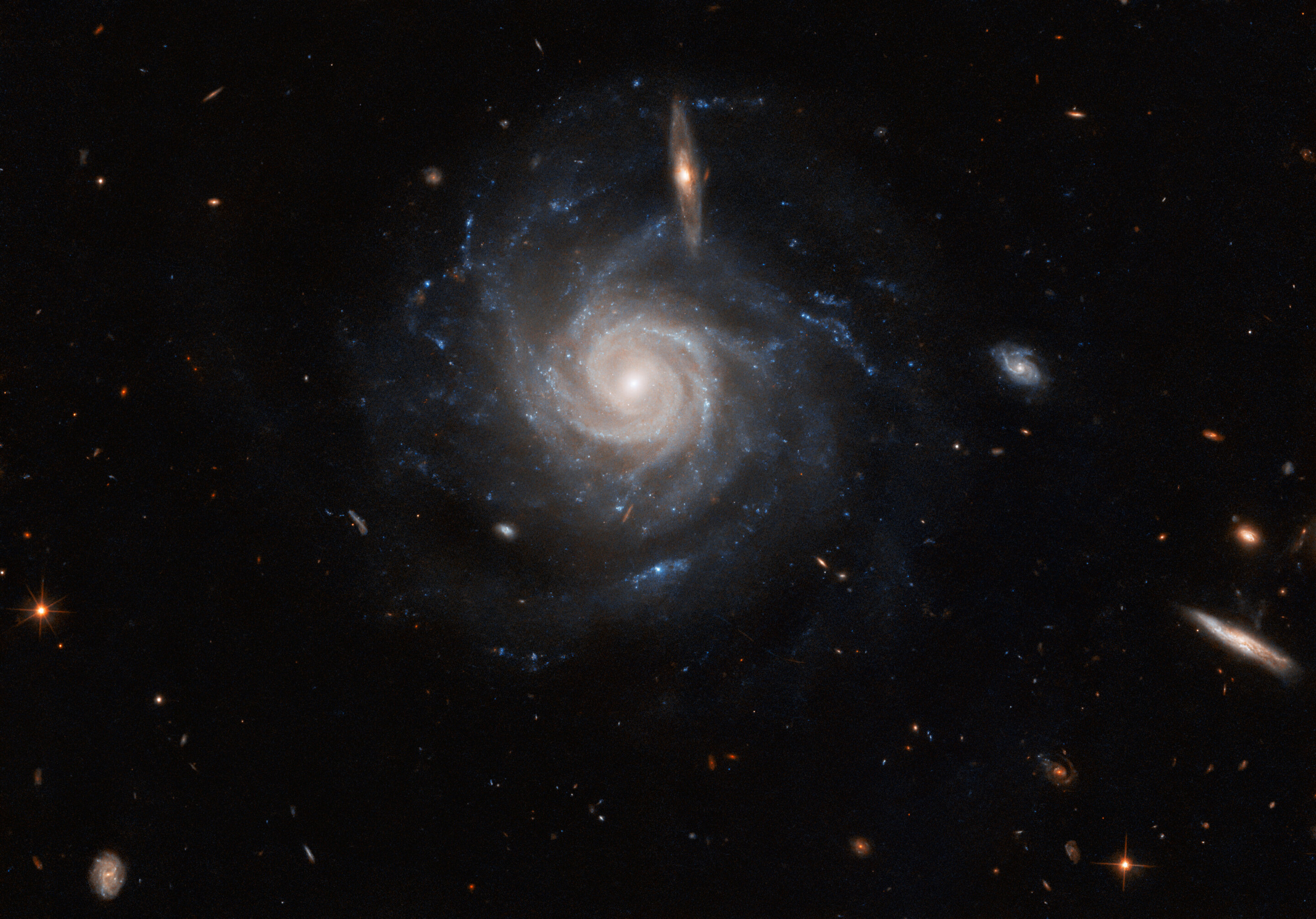 |
| Credit: ESA/Hubble & NASA, C. Kilpatrick, R.J. Foley |
The Hubble Space Telescope has captured a stunning image of the barred spiral galaxy UGC 678, located approximately 260 million light-years away from Earth. The image showcases the galaxy's majestic and winding spiral arms, stretching across the frame as if to beckon stargazers to peer deeper into its mysteries.
Bar-Shaped Structure of Stars
Barred spiral galaxies are characterized by their unique bar-shaped structure of stars that extends from opposite sides of the galaxy's central bulge. These bars are formed when the orbits of stars near the galaxy's heart become unstable and stretched out. As their orbits lengthen, they create a bar that grows as their gravity captures more and more nearby stars.
Faint Bar in UGC 678
The bar in UGC 678 is faint but visible as a diagonal group of stars that stretches from the lower left (7 o'clock) to the upper right (1 o'clock) of the galaxy's core. The image also captures a smaller edge-on galaxy in the foreground that appears to bisect the upper portion of UGC 678.
Face-On Orientation
What makes UGC 678 particularly noteworthy is its almost face-on orientation, which allows for a clear and unobstructed view of its spiral arms. This orientation is rare in astronomy, as most spiral galaxies are seen at an angle, making it difficult to discern the structure and shape of their arms.
Importance of Studying Barred Spiral Galaxies
Studying barred spiral galaxies such as UGC 678 is important for understanding the formation and evolution of galaxies in the universe. The bar structure in these galaxies plays a crucial role in redistributing gas and dust, triggering the formation of new stars, and shaping the overall morphology of the galaxy.
Furthermore, barred spiral galaxies are thought to be more common in the universe than previously believed, making them a valuable area of study for astronomers and cosmologists.
The Hubble Space Telescope has been instrumental in capturing stunning images of galaxies such as UGC 678, allowing scientists and enthusiasts alike to marvel at the beauty and complexity of the universe.



0 Comments